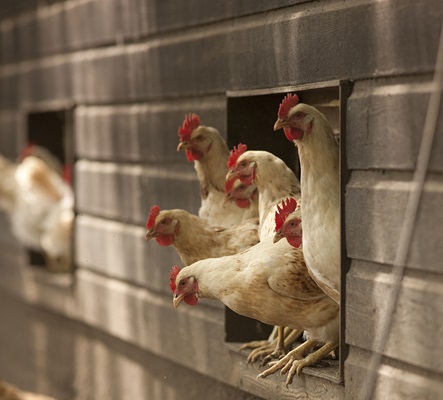11/9/2020:
Published by Avined
E. coli are the most common bacteria found in poultry. Infection causes inflammation of the air sacs, liver lining and pericardium in broilers, as well as inflamed oviducts and peritonitis in layers. Pathogenic strains of E. coli are regularly detected in the poultry monitoring. Routine testing allows us to determine whether the population of pathogenic E. coli strains is changing in the Netherlands. We then also know whether the number of E. coli problems may increase. However, a test needs to be available for that purpose.
Royal GD was commissioned by the poultry sector to test two methods:
1. Micro-array: this test examines many small pieces of genetic material simultaneously.
2. Whole Genome Sequencing (WGS): this test maps out all the genes (the genome) in one go, which gives a more comprehensive picture than the micro-array.
Fourty E. coli strains were tested with these two methods. The results of both methods showed great concordance, and both methods are therefore suitable for detecting E. coli strains. However, the results obtained using the WGS method seem to be more sensitive and robust, and provide more New Newspageinformation. As a result, they are more valuable. This was the first step in determining whether the population of pathogenic E. coli strains is changing in the Netherlands.
Follow-up research: insight into pathogenic E. coli strains
GD is currently identifying unique signs (molecular markers) of pathogenic E. coli strains. This will allow us to determine whether the population of pathogenic E. coli strains is changing in the Netherlands. Not only over the years but also within production types (e.g. regular vs. slow-growing broilers), production breeds (e.g. brown vs. white layers) or various disease processes (e.g. respiratory and locomotion problems, cellulitis and sepsis). This research was also funded from the poultry sector’s research contribution. The results are expected by the end of 2020.
Practical results: more specific control plan
Once the unique signs of the pathogenic E. coli strains have been identified, this will help to control them more specifically, because if the test finds these E. coli strains in your chickens, you will know more about the pathogenicity of these strains. Together with your vet, you can then take better decisions on which strains have priority in the control plan and vaccination. You will also know more about the relationship between the strains. For example, if there is a link between bacteria strain A and bacteria strain B. This information helps to identify risk factors. Finally, these research results will also answer the question whether the E. coli population is changing in the Netherlands.
